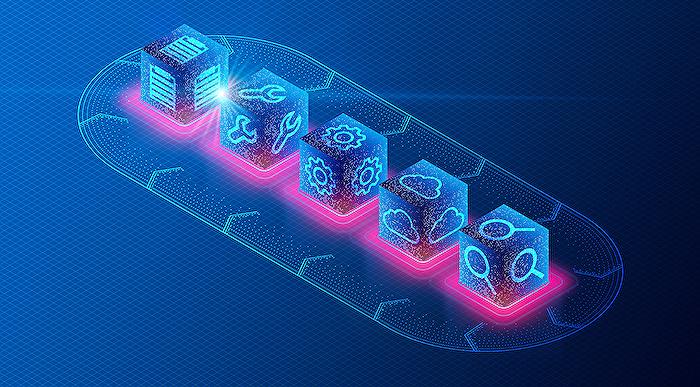- All of Microsoft

ALM Blueprint for Success on Power Platform Guide
Master Microsofts ALM for Power Platform - a comprehensive guide to successful application lifecycle management!
Key Insights from Nati Turtledove's Blog
Nati Turtledove in her recent blog discusses the role of Application Lifecycle Management (ALM) in Microsoft's Power Platform. She portrays ALM as a structured process which begins from developing a solution and ends at its retirement. ALM involves a series of steps to ensure the success of a solution. These steps include planning, setting development norms, laying out stages for deployment, and quality testing among others.
The blog post further explains that in the Power Platform's ecosystem, ALM supports both creators and administrators in solution management, right from planning to its execution. She describes the ultimate objective of ALM in Power Platform as peers' facilitation in developing and delivering solutions in a regulated, process-oriented manner. Also, it ensures that every deployed solution strictly adheres to a structured standard and governance.
Nati moves ahead by underlining three crucial aspects of ALM, relative to Power Platform. Firstly, 'Governance', which comprises multiple processes on how development and deployments are maintained within an organization. It includes Development Standards (to ensure code consistency and efficiency), Security and Compliance (for managing sensitive data within the solution), and Deployment Stages (guiding creators through orderly environments for quality assurance, testing, and managing separate production content from developmental content).
Secondly, 'Collaboration' involves an array of topics. It includes channelized communication between the project's developers and stakeholders, integrated project management tools (like DevOps), and implementation of a version control or source control.
Thirdly, 'Automation' significantly reduces the chance of human errors. Examples of automation provided in the blog include automated deployments to varied environments and production, test automation to ensure solutions are production-ready, and automation of tasks such as unpacking solutions into a source control.
Overall, Nati's blog underlines the importance of a successful ALM process in streamlining development and deployment of solutions. If you are interested in learning more, click here.
A General View on ALM in Microsoft's Power Platform
Application Lifecycle Management (ALM) plays a critical role within the Microsoft Power Platform architecture. Its structuring helps in regularizing and controlling the process of development and deployment. With various components such as governance, collaboration and automation being aptly incorporated, ALM essentially ensures the product efficiency and efficacy while minimizing potential errors in the course of the production timeline.
Read the full article ALM for Power Platform: A Blueprint for Success

Learn about ALM for Power Platform: A Blueprint for Success
This blog post highlights the importance of Application Lifecycle Management (ALM) within Microsoft's Power Platform. ALM refers to a structured process accompanied by defined tools for managing the full lifecycle of developing a solution until its retirement. The piece specifically focuses on how ALM fits into the Power Platform ensuring a streamlined development and deployment.
ALM in the Power Platform context is a structured mechanism that assists Makers and Admin in managing solutions. The process spans from the planning phase to deployment. The ultimate aim of integrating ALM into the Power Platform is to aid organisations/users in developing and delivering solutions in a controlled, process-driven way. It guarantees adherence to a structured standard and governance for all deployed solutions.
Considerable emphasis has been placed on the components of ALM. Below are three vital elements incorporated into the Power Platform process.
- Governance: this covers multiple processes concerned with the management of development and deployments within an organisation. Included in governance are systems such as Development Standards for consistent and efficient code, Security & Compliance for managing sensitive data in solutions and implementing secure measures, and Deployment Stages which guide makers through structured environments assisting quality assurance, testing and separations between production and development content.
- Collaboration: this entails several topics involved with collaboration processes. These include channeled communication between project developers and stakeholders for updates, integral project management tools like DevOps for the alignment of solution with requirements, and implementing version control, or source control, which is essential for governing release management and maintaining an up-to-date location for production code.
- Automation: crucial for managing repetitive tasks to reduce human errors and follow a defined process. Examples of automation processes are deployment automation to various environments and production, implementation of test automation for ensuring production-ready solutions, and automation of tasks like unpacking solutions into source control, updating user stories, or developing test plans or UAT scripts.
Conclusively, these factors make up a successful ALM process, potentially streamlining the development and deployment of solutions on the Power Platform. And by integrating your own ALM methodologies, you can ensure efficient and effective control over the development and deployment of your solutions. For more detailed knowledge on ALM, upcoming discussions will explore how to set up an ALM governance framework like a pro.
More links on about ALM for Power Platform: A Blueprint for Success
- ALM for Power Platform: A Blueprint for Success
- Jan 23, 2023 — ALM is a structured process with defined tools used to manage the full lifecycle of developing a solution until its retirement.
- ALM for Power Platform: A Blueprint for Success
- Jan 27, 2023 — ALM is a structured process with defined tools used to manage the full lifecycle of developing a solution until its retirement. A complete ALM ...
- About ALM with Power Platform
- Learn how to implement application lifecycle management (ALM), including governance, development, and maintenance, using Microsoft Power Platform.
Keywords
ALM, Power Platform, Blueprint for Success, ALM for Power Platform, Power Platform Success, ALM Blueprint, Success in ALM, Power Platform Blueprint, Successful Power Platform, Blueprint for ALM